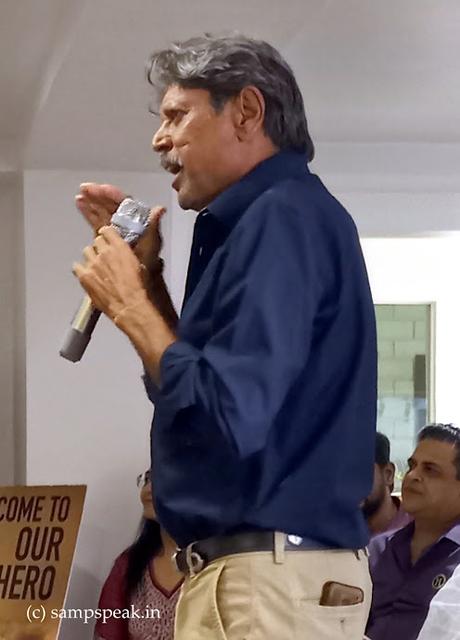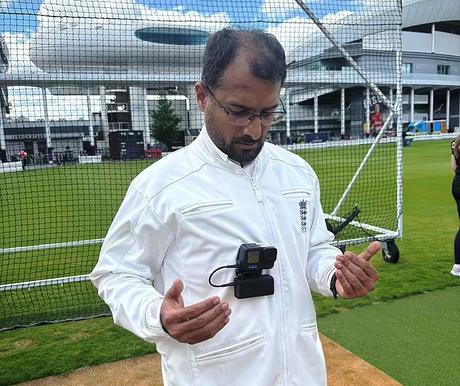Soon IPL 2024 would draw to a close – this season has been extremely entertaining. IPL provides opportunities to many youngsters to brush shoulders with International stars – whether that is good or bad is debatable. A similar situation prevailed in mid 1970s / 1980s when there were so many stars from West Indies and other lands playing in English counties. Good experience, yet England kept losing badly to WI – and now they are banking on AI – yes Artificial intelligence on a costly business model on ‘what it takes to win !’
Remember there used to be conditioning camps just prior to a tour and there would be some discussions in leading newspapers about probables! – there were times when Bharat Reddy was spoken high as a replacement for Farokh Engineer ! – for Australia tour 1980 – in the Deodhar trophy, perhaps a brilliant innings by Thirumalai Echambadi Srinivasan clinched him a position when most expected Krish Srikkanth to be selected. Before that all important tour to Pakistan in 1978 under Bishan Bedi, the fast bowling vacancy was discussed as between Abid Ali, Jyoti Prasad and Barun Burman but a lad caught selectors’ attention in the camp and that changed the destiny of pace in India – Kapil Dev !

Stumbled on a scorecard of a Duleep trophy match between South Zone and North Zone in Oct 1977 – the scorecard makes an awesome read of the star value (but perhaps not all of them were Stars at that time)
The match was played at Bangalore. North had a strong contingent with Test players : Chetan Chauhan, Mohinder Amarnath, Surinder Amarnath, Madan lal& Bishan Bedi; those who later played for India were : Yashpal Sharma, Rakesh Shukla and mercurial Kapil Dev - Hari Gidwani, Vedraj Chauhan (wk) & Rajinder Goel completed the list.
For South – it was : Abid Ali, Gundappa Viswanath, Brijesh Patel, Syed Kirmani, Srinivasan Venkatraghavan, Erapalli Prasanna and Bhagwat Chandrasekhar; TE Srinivasan& B Narasimha Rao went on to represent the Nation; others were the tall leftie V Sivaramakrishnan, Jyothi Prasad
To put it simply, one had to rise through the ranks ie., play league, perform well in Ranji, get a chance for the Zone (Duleep / Deodhar) and if lucky, Irani Cup and .. .. hope to be in with a chance for the National team. Now the process of selection of England’s squad for next year’s Ashes began this week, using the ECB’s ground-breaking £500,000-a-year camera technology.
Headed by performance analysis lead Stafford Murray, the boffins based at Loughborough will use their vast pool of data, in conjunction with expert input from the likes of England coach Brendon McCullum and captain Ben Stokes, to produce a photofit of what a winning Test team in Australian conditions looks like.They will then find the players from within the English game whose individual characteristics most closely replicate the required mould. So, for example, if the boffins suggest England require a bowler taller than six and a half foot, another able to maintain 87-mile-per-hour for the entire day and a left-armer consistently swinging the ball more than X degrees to create the most potent attack for their 2025-26 tour, they will hone in on the best fits from the county game rather than pore through the numbers of those excelling in the here and now.
‘It’s a massive project we’ve just started, on what it will take to win the Ashes,’ Murray said, explaining that while data based, it inevitably incorporates the knowledge of coaches and players past and present.The ECB's performance team are currently in the process of building a "What It Takes To Win" model for the 2025-26 tour to Australia. Its construction will be informed by the knowledge of coaches and players past and present, along with data accrued from previous visits. Once deemed robust enough, it will refine decisions around talent ID and provide selectors all the information required to select a squad capable of a first win Down Under since 2010-11. The aim, ultimately, is to "bring data to life".
Thanks to the ECB's new iHawk technology, collecting that data has never been easier or more qualitative. Through cameras worn by umpires, each delivery is tracked to provide information such as seam movement, release height, pace and swing. An overlay highlighting the path of the ball is then produced, complete with the above information at the top left of the screen. A soft launch in 2023 saw 200 matches and over 50,000 balls logged from more than 250 bowlers. Every domestic men's and women's match will be covered for the first time this season.

A longer-term project is currently in the works to determine the precise difference in behavior between the Dukes and Kookaburra balls from gleanings during its use in the first two rounds of the County Championship, supplemented by findings when it returns in July and August.With the start of England men's Test summer two months away, all this will be fed to the selection committee made up of captain Ben Stokes, head coach Brendon McCullum, managing director Rob Key and national selector Luke Wright. Whether for the series against West Indies or Sri Lanka, a scientific punt could be in the offing.
"If we're brave, which I know we will be, we'll be selecting in series before the Ashes with the Ashes in mind," says Murray, referencing the fact players best equipped to perform in all conditions will be considered. "It's a blend and it's an ongoing, iterative process, working towards a long-term goal. It's a 'performance backwards' approach."Primarily a business model, "performance backwards" is as it sounds; identifying a future goal and working out the route to that point in reverse. England employed it for the recent tour of India, which led to the selection Shoaib Bashir. The Somerset offspinner took 17 wickets across three Tests, having arrived with a first-class average of 67.00 from just six matches.
"Shoaib is a really good example [of this]," explains Hannah Jowitt, the lead on the iHawk project as well as analyst and project specialist for the ECB's pathway and disability programmes. After Stokes spotted Bashir bowling to Alastair Cook on a social media post by the County Championship account, the gears started turning."One step before that, we analysed what was needed in India. Release height in India was really important. We got data from county cricket. That, combined with scouts' insights, led to his selection for the UAE [Lions] camp. Coaches and selectors had physical eyes on him there. We got more iHawk data on him, more video [fed directly by Murray to a WhatsApp group featuring Key, McCullum, Stokes and Wright], which led to his selection for playing in India."
Essentially, iHawk is HawkEye "lite". The full bells and whistles, which require between four and six cameras, are exclusive to international cricket due to, among other factors, cost.
Technology will scientifically prove that a red cherry hurled at 150 kmph offers less than half of a second for batsman to decide, yet you find batters hitting it over square, over keeper, straight down or over extra cover for a six too!! Despite all the aura and Science, there are games where individual raw talents can succeed irrespective of data, average, likelihood, analysis, coaching and more. Whether technology can ever succeed raw innate talent will be put to test again and again.
With regards – S Sampathkumar17.5.2024.

